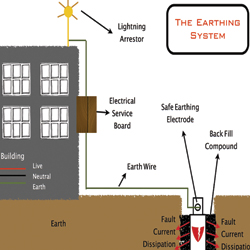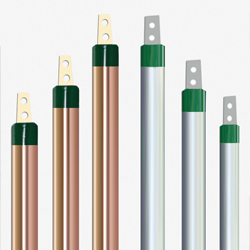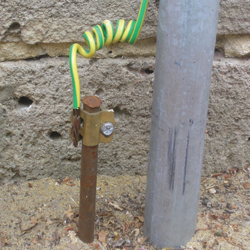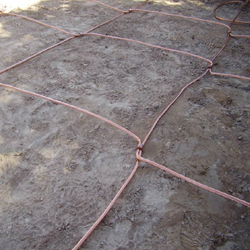-
Plate Type Earthing
-
Pipe Type Earthing
-
Coil Type Earthing
-
Chemical Earthing
Purpose of Earthing
(1) Safety for Human life / Building / Equipment
- To save human life from danger of electrical shock or death by blowing a fuse i.e. to provide an alternative path for the fault current to flow so that it will not endanger the user.
- To protect buildings, machinery & appliances under fault conditions.
- To ensure that all exposed conductive parts do not reach a dangerous potential.
- To provide safe path to dissipate lightning and short circuit currents.
- To provide stable platform for operation of sensitive electronic equipments i.e. To maintain the voltage at any part of an electrical system at a known value so as to prevent over current or excessive voltage on the appliances or equipments.
(2) Over voltage protection
- Lightning, line surges or unintentional contact with higher voltage lines can cause dangerously high voltages to the electrical distribution system Earthing provides an alternative path around the electrical system to minimize damages in the system.
(3) Voltage stabilization
- There are many sources of electricity. Every transformer can be considered a separate source. If there were not a common reference point for all these voltage sources it would be extremely difficult to calculate their relationships to each other.
- The earth is the most omnipresent conductive surface and so it was adopted in the very beginnings of electrical distribution systems as a nearly universal standard for all electric systems.
Maximum Allowable Earth Resistance
- Major power station= 0.5 Ohm
- Major Sub-Station= 1.0 Ohm
- Minor Sub-Station= 2 Ohm
- Neutral Bushing= 2 Ohm
- Services Connection= 4 Ohm
- Medium Voltage Network= 2 Ohm
- L.T Lightening Arrestor = 4 Ohm
- L.T Pole = 5 Ohm
- H.T Pole = 10 Ohm
- Tower = 20-30 Ohm
|










